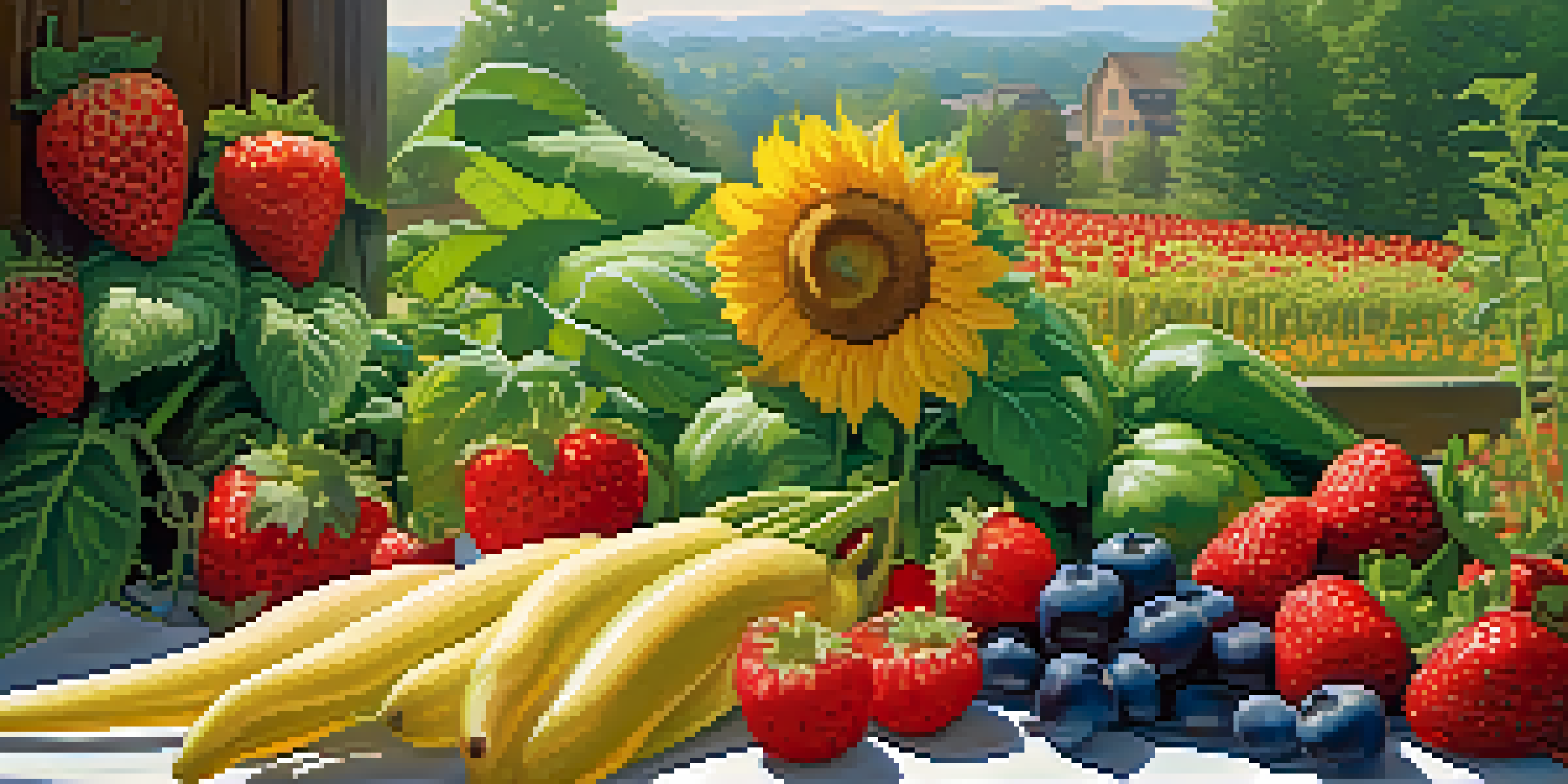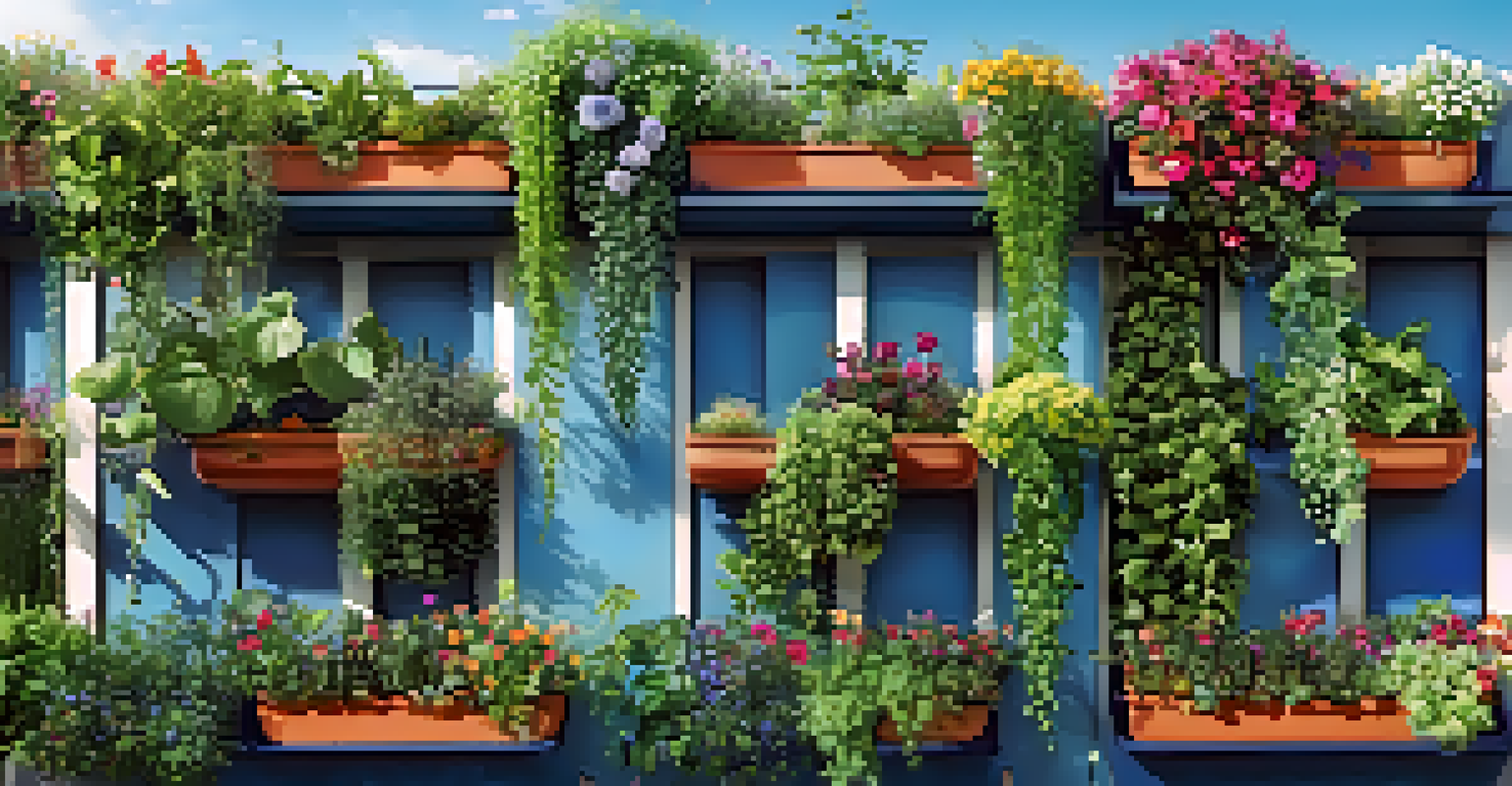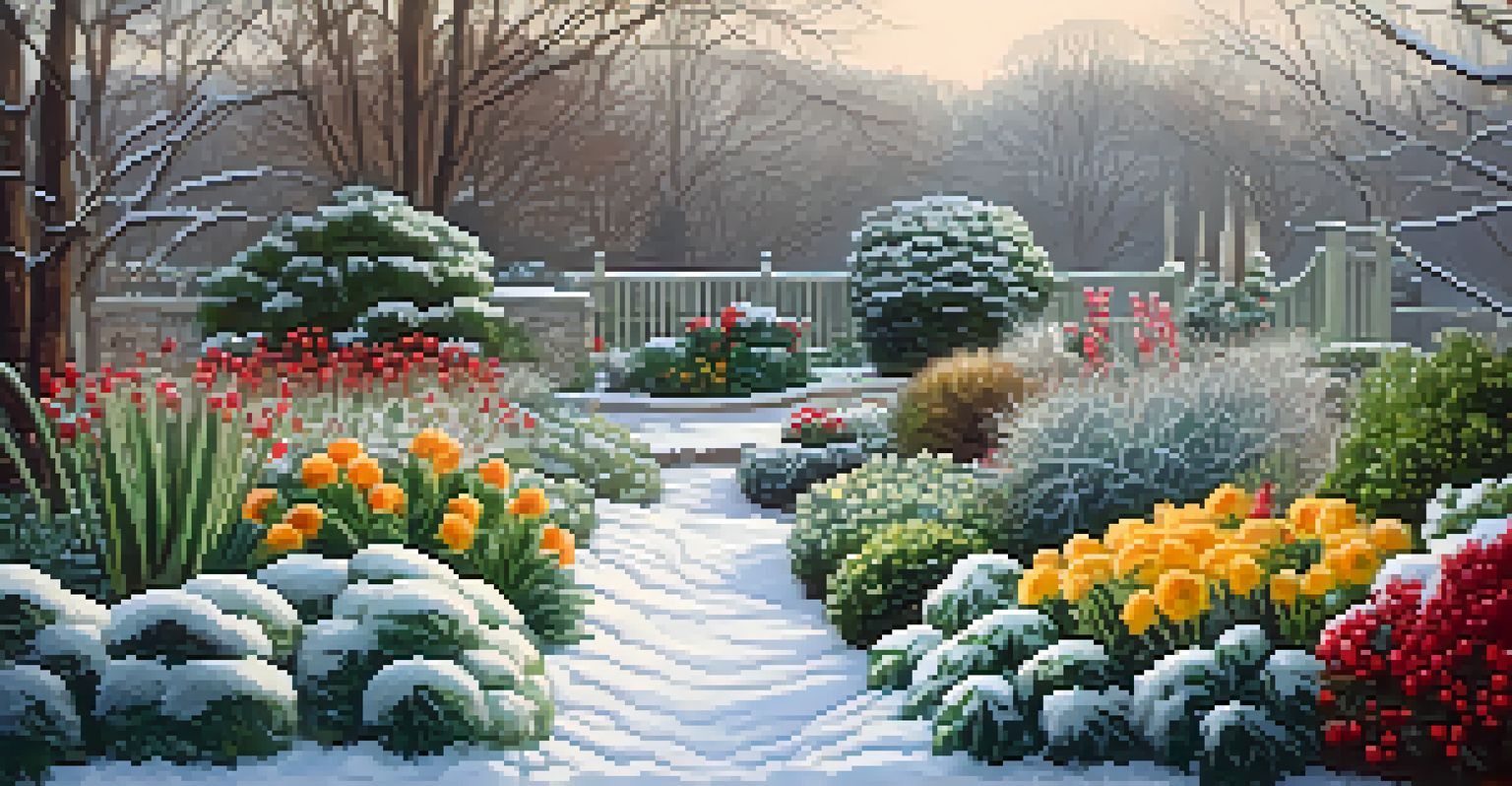Combining Aesthetics with Nutrition: Edible Landscaping Ideas

Understanding Edible Landscaping: The Basics
Edible landscaping is the art of integrating food-producing plants into ornamental landscape designs. Think of it as forming a beautiful garden that doubles as a source of fresh produce. This approach not only enhances the aesthetics of your space but also promotes sustainability by reducing the distance your food travels.
Gardening is a way of showing that you believe in tomorrow.
Imagine walking through a garden filled with vibrant colors and delightful fragrances, all while knowing that each plant contributes to your meals. You can create a stunning visual display with fruits, vegetables, and herbs, all while reaping the nutritional benefits they provide. By carefully selecting a mix of plants, you can have a garden that pleases both the eyes and the palate.
Incorporating edible plants into your landscape allows for creativity and personal expression. Whether it’s a small balcony or a spacious backyard, you can tailor your garden to reflect your style while ensuring it yields delicious produce throughout the seasons.
Choosing the Right Plants for Your Edible Garden
Selecting the right plants is crucial for a successful edible landscape. Start by considering your climate and soil type, as these factors will influence what will thrive in your space. Popular choices include herbs like basil and rosemary, fruit-bearing plants such as strawberries and blueberries, and vegetables like tomatoes and peppers.

When choosing plants, think about their growth patterns and how they’ll interact visually. For example, tall sunflowers can create a backdrop for shorter herbs, while cascading strawberries can add a touch of whimsy to your garden. Mixing different textures and colors will not only enhance the aesthetics but also make your garden more productive.
Edible Landscaping Combines Beauty and Nutrition
Integrating food-producing plants into your landscape enhances aesthetics while providing fresh produce.
Don’t forget about seasonal considerations—planting a variety of species that produce at different times will ensure a continuous harvest throughout the year. This not only keeps your garden looking lively but also provides a steady supply of fresh ingredients for your kitchen.
Design Principles for an Aesthetic Edible Landscape
Creating a visually appealing edible landscape requires some design principles that can make all the difference. Start with a focal point, such as a fruit tree or a vibrant flower bed, to draw the eye. Use paths and borders to define areas and create structure, guiding visitors through your edible paradise.
The greatest gift of the garden is the restoration of the five senses.
Incorporating layers into your garden can also add depth and interest. For instance, plant taller vegetables like corn or sunflowers at the back, with shorter plants in front. This tiered approach not only makes the garden more visually appealing but also maximizes space and sunlight for all plants.
Consider the color palette as well—mixing bold colors with softer hues can create a balanced look. Complementing the natural beauty of your edible plants with decorative elements like garden art or seating can transform your garden into a delightful gathering space.
Incorporating Herbs for Flavor and Fragrance
Herbs are a fantastic addition to any edible landscape, providing both culinary and aromatic benefits. Imagine stepping into your garden and being greeted by the fresh scent of basil or mint—what a delightful way to enhance your cooking! Herbs not only add flavor to your meals but also attract beneficial insects and pollinators.
When choosing herbs, consider planting them in unique containers or raised beds to create visual interest. They can also be used as borders or ground cover, making them both functional and beautiful. Varieties like chives and thyme can spill over edges, adding a lush appearance to your garden.
Choose Plants for Your Environment
Selecting the right plants based on climate and growth patterns ensures a thriving and visually appealing garden.
Additionally, many herbs are perennial, meaning they’ll come back year after year, providing a continuous source of flavor and fragrance. This can help create a low-maintenance space that rewards you with beauty and bounty season after season.
Vertical Gardening: Maximizing Space and Aesthetics
For those with limited space, vertical gardening is a game-changer. By growing plants upward instead of outward, you can transform even the smallest balconies or patios into lush edible landscapes. Use trellises, wall planters, or even repurposed pallets to create an eye-catching vertical garden that produces food.
Climbing plants like peas, beans, and cucumbers are perfect for vertical gardening, as they naturally grow upward. This not only saves space but also creates an intriguing visual element in your landscape. Imagine a wall covered in vibrant green vines, dotted with colorful produce—it’s both functional and beautiful!
Vertical gardens can also be designed to occupy sunny spots, maximizing light exposure for your plants. This means you can enjoy a diverse array of fruits and vegetables without needing an expansive garden plot.
Seasonal Edible Landscaping: Planning for Year-Round Beauty
Planning for year-round beauty in your edible landscape is all about understanding seasonal changes and plant cycles. By selecting a mix of annuals and perennials, you can ensure that your garden remains vibrant through every season. Imagine a winter garden featuring hardy greens like kale that still looks lush and inviting.
Incorporating seasonal flowers alongside your vegetables can add a pop of color and attract pollinators. Think about planting spring bulbs that bloom early, followed by summer blooms, and then fall foliage that creates a striking visual display. This layered approach ensures your garden is never dull.
Maintain Your Garden for Longevity
Regular care and organic practices are essential for sustaining the health and productivity of your edible landscape.
Don’t forget about winter interest, too! Consider leaving some plants standing for visual appeal or incorporating evergreen herbs like rosemary. This way, your edible landscape remains a source of beauty and nutrition, no matter the time of year.
Maintaining Your Edible Landscape for Long-Term Success
Maintaining your edible landscape is essential to ensure its longevity and productivity. Regular care, including watering, weeding, and pruning, will keep your plants healthy and thriving. Think of it as nurturing a friendship—consistent attention leads to a bountiful relationship, both in beauty and harvest.
Organic practices, such as composting and using natural pest control, can help you maintain a sustainable garden that’s free from harmful chemicals. This not only benefits the plants but also the environment and your health. Plus, it’s rewarding to see your garden flourish through your efforts.

Lastly, take the time to enjoy the process. Gardening is not just about the end result but also about the journey. Spend time in your garden, savoring the colors, scents, and tastes of your hard work. This connection to your edible landscape will enhance your experience and encourage you to keep cultivating beauty and nutrition.